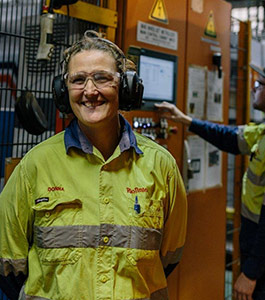This is the third and final article within the Inclusive Workplace Series. So far, we have looked at what an inclusive workplace is, the values of an inclusive workplace as well as the many barriers workplaces face to creating an inclusive culture. Understanding the benefits of creating diverse and inclusive workplaces to bring about innovative, dynamic, driven and competitive change is a powerful incentive. Inclusive cultures can encourage commitment, grow talent and promote wellbeing. So how can inclusiveness be built into your workplace and how can the barriers be broken?
Just like creating and introducing diversity to the workplace, creating inclusiveness is not an overnight operation. It starts from the top whereby the organisation commits itself in strategy and policy, through role modelling and training over time in order to create change1. The key to creating inclusiveness is to:
- Embrace demographic diversity
- Make room for cognitive diversity
- Accept an individual’svariety of experiences and perspectives at the core of diversity
- Removing unconscious bias within recruitment processes will also encourage inclusiveness2
- Building inclusive language and strategies within your overall goals and diversity goals
- Introduce training in diversity
- Promote inclusiveness repetitively over time.
The moment the context of diversity is changed, it can be accepted, allowing the business to accelerate the introduction of inclusiveness.
Secondly, a workplace will also need to:
- Build safe spaces where individuals can discuss ideas, experiences, strategies and solutions freely and openly
- Allow every member of the team the chance to speak at all meetings and events to ensure an open dialogue is created
- Promote mentoring to provide all members access to opportunities, information and positive growth.
In addition, these safe spaces also need to allow for times where constructive criticism and feedback is provided without the individuals feel unsafe, attacked or unjustly dealt with3. In this manner, the feeling of safety will promote a sense of wellbeing within the organisation.
Thirdly, management will need to:
- Foster an environment that promotes fairness, equity, respect, tolerance and ethics
- Provide fair and equitable opportunities for advancement
- Encourage open dialogue embracing differences, as well as
- Balance organisational needs with the needs of the individual.
This will allow the team to not only accept diversity and inclusion changes, but embrace it. It will allow each member of the organisation to reach their potential, maximise their contributions to company goals, as well as promote a sense of collective wellbeing and teamwork4,5.
Thank you for reading our final instalment on how to build an inclusive workplace. Our next series will focus on mental health and wellbeing within the workplace, the impacts and implications of mental wellbeing, as well as how to foster a healthy environment to promote wellbeing.
- Green, Lopez, Wysocki and Kepner (2012), “Diversity in the Workplace: Benefits, Challenges and the Required Management Tools”, HR022 Food and Resource Economics Department, Florida Cooperative Extension Service, Institute of Food and Agricultural Sciences, University of Florida, pp.1-3.
- Jenkins, Ryan (2020), “Here are the Benefits of Inclusion and how to create an inclusive culture”, https://www.inc.com/ryan-jenkins/here-are-benefits-of-inclusion-how-to-create-an-inclusive-culture.html, accessed 16 August 2020.
- Green, Lopez, Wysocki and Kepner, et al, p. 3
- Patrick, Kumar, (2012), “Managing workplace diversity: issues and challenges”, Sage Publications, pp.1-15
- Malakyan, Schlak, Wang, (2020) “Diverse Personalities, Egos, Roles, and Relations: Toward Workplace Wellbeing”, The Palgrave Handbook of Workplace Wellbeing, Springer Nature Switzerland AG, pp.3-31.





